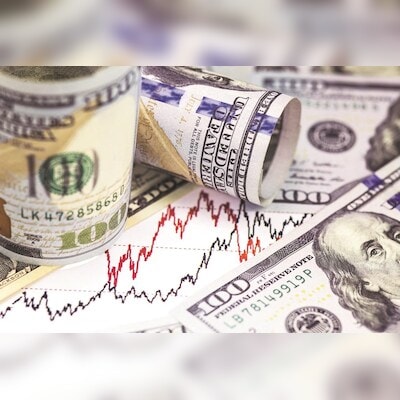[ad_1]
)
The Australian and New Zealand dollars struck one-month highs of $0.6694 and $0.6086.
The yen rose sharply on Monday and the euro touched its highest this year as the dollar retreated broadly with traders bracing for dovish signals from Federal Reserve meeting minutes and Chair Jerome Powell’s speech at Jackson Hole.
The minutes of the Fed’s July meeting, due on Wednesday, and Powell’s speech on Friday are likely to be the main currency drivers in a week that will also see inflation data from Canada and Japan and Purchasing Managers’ Index readings across the United States, euro zone and UK.
Against the yen, the dollar was about 1 per cent lower at 146.20, after earlier slipping below 146.
Analysts attributed the move to broad dollar weakness, along with the potential for further policy divergence between the U.S. and Japan.
Bank of Japan (BOJ) Governor Kazuo Ueda is expected to discuss the central bank’s decision last month to raise interest rates when he appears in parliament on Friday,
“The relative rates narrative is certainly supporting a lower dollar,” said Colin Asher, senior economist at Mizuho.
“Powell will probably be reiterating that rate cuts are coming fairly soon, and most likely Ueda will say that, assuming the base case continues to hold, we would expect to be hiking rates in Japan.”
Asher however said the dollar/yen pair is unlikely to go much lower in the short-term as he expects the Fed to cut interest rates by 25 basis points (bps) in September, while markets are pricing in cut of 33 bps, likely paving the way for a firmer dollar.
Against a basket of other major currencies, the dollar fell to a seven-month low of 102.15.
EURO GOES STRONG
The euro was 0.1 per cent higher at $1.1043, having touched its strongest level of the year at $1.1051 earlier in the day.
Sterling rose to a one-month high of $1.2975 and was last at $1.2968.
The BOJ’s hawkish tilt last month contributed to the early August market turbulence in the wake of a massive unwinding of yen-funded carry trades, triggering a heavy selloff in risk assets and sending stock markets, including the Nikkei, crashing.
The volatility was compounded by a slew of softer-than-expected U.S. economic data – in particular, a weak jobs report for July – as investors feared the world’s largest economy was headed for a recession and that the Fed was being slow in easing rates.
Traders have fully priced in a 25-basis-point rate cut from the Fed in September, with a 29 per cent chance of a 50 bp move. Futures point to over 96 bps worth of easing by year-end.
“Markets will be laser focused on what Powell has to say… and on that, I think it will be a great opportunity for Powell to either endorse or push back market pricing,” said Carol Kong, a currency strategist at Commonwealth Bank of Australia.
“I think he’ll at least greenlight a rate cut at the September meeting. If anything, I think he’ll try to retain optionality because we do have some more data before the next meeting.”
The Australian and New Zealand dollars struck one-month highs of $0.6694 and $0.6086, respectively, as risk sentiment picked up on expectations for a dovish Fed outcome.
(Only the headline and picture of this report may have been reworked by the Business Standard staff; the rest of the content is auto-generated from a syndicated feed.)
First Published: Aug 19 2024 | 3:38 PM IS
[ad_2]
Source link

